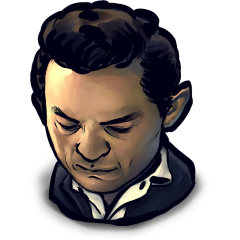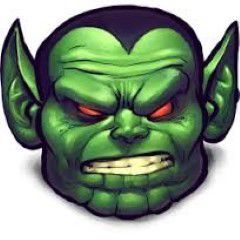ACC561 Final Paper MCQ Bank1 24 24
Q1. The two critical components of distribution strategy are _____ and _____.
a. marketing channels; logistics and supply-chain management
b. physical distribution; relationship marketing
c. location; cost
d. warehousing; transportation
Q2 . An organized system of marketing institutions and relationships that promotes the physical flow and ownership of goods and services from producer to consumer or business user is:
a. an intermediary institution.
b. a marketing fulfillment organization.
c. retail marketing.
d. a marketing channel.
Q3. Physical distribution extends beyond transportation to include all of the following decision areas except:
a. inventory control.
b. material handling.
c. risk analysis.
d. protective packaging.
Q4. Marketing intermediaries are:
a. middlemen who operate between producers and consumers or business users.
b. management consulting firms that advise producers on distribution strategy.
c."personal shoppers" who are paid to purchase products for busy customers and businesses.
d. financial institutions that arrange for the financing of business purchases.
Q5. Which of the following categories of organizations is likely to have the longest distribution channel?
a. Firms producing B2B products and services
b. Not-for-profit organizations
c. Firms producing consumer goods
d. Service firms
Q6. - All of the following usually move through short channels except:
a. business products.
b. service firms.
c. not-for-profit organizations.
d. nonperishable items.
Q7. The traditional marketing channel for consumer goods proceeds from producer to:
a. the consumer.
b. agent to wholesaler to retailer to consumer.
c. agent to the end user.
d. wholesaler to retailer to consumer.
Q8. Small producers in the industrial market may attempt to market their offerings through large wholesalers by utilizing agents that are called:
a. industrial distributors.
b. manufacturers' representatives.
c. direct marketers.
d. auction companies.
Q9 . In addition to traditional drug stores, Dr Scholl's foot care company has decided to market through home medical care supply centers and telemarketing to podiatrists. This is an example of:
a. reverse marketing channels.
b. home marketing.
c. scrambled merchandising.
d. dual distribution.
Q10. The process of using every channel available to market a product is called _____ distribution.
a. exclusive
b. specialized
c. selective
d. intensive
Q11. Lakeview Industries contracts with Marine Motor Distributors to carry their newly patented outboard engine. In exchange for exclusive dealership rights, Marine Motor has agreed to carry the full line of boating accessories offered by Lakeview. This can be described as a(n):
a. tying agreement.
b. distributor contract.
c. intensive distribution agreement.
d. exclusive geographic selling.
Q12. When identically branded products are carried in competing retail pharmacies, discount houses, department stores, convenience stores, and mail-order houses, the marketing channel conflict that can result is referred to as:
a. coercive conflict.
b. vertical conflict.
c. competitive conflict.
d. horizontal conflict.
Q13. If KitchenAid established an electronic storefront where customers could purchase mixers and accessories from the company's Web site, it is likely to result in _____ with retailers.
a. vertical channel conflicts
b. horizontal channel conflicts.
c. exclusive dealing agreements
d. tying agreements
Q14 Licensed goods manufactured abroad and then sold in the U.S. market in competition with U.S. counterparts are called _____ goods.
a. black market
b. inferior
c. gray
d. horizontal
Q15. A fast-food giant invests in potato farms in the Midwest as a means of stabilizing their raw material prices. This is an example of:
a. forward integration.
b. backward integration.
c. a tying agreement.
d. a violation of the Sherman Anti-Trust Act.
Q16. Many department stores have eliminated product categories such as toys, appliances, and furniture from their merchandise assortment because:
a. they offer a greater level of differentiation than their competitors.
b. they have high overheads and low profit margins.
c. they are not suitable for developing brand insistence.
d. they cannot be efficiently targeted at department store shoppers.
Q17. _____ represent nonrefundable fees grocery retailers receive from manufacturers to secure shelf space for new products.
a. Switching costs
b. Franchise fees
c. Carrying costs
d. Slotting allowances
Q18. A retail store advertises that it is reducing the original selling price of select products by a small amount. This reduction in the original prices of the products by the retailer is known as:
a. depreciation.
b. writing-off.
c. underwriting.
d. markdown.
Q19. When a retailer tries to convince a customer to buy a higher-priced item than he or she had originally intended, it is called:
a. cross-selling.
b. value-added selling.
c. selling up.
d. bait-and-switch.
Q20. Reminding a customer that the flashlight they just purchased requires batteries (which you have available for sale) would be an example of:
a. cross selling.
b. bait-and-switch.
c. Sullivan nod.
d. suggestion selling.
Q21. The combination of physical characteristics and amenities that contribute to a store's image is called:
a. atmospherics.
b. décor.
c. tableaux.
d. logistics.
Q22. _____ are groups of retail outlets that operate under central ownership and management and handle the same product lines.
a. Specialty stores
b. Chain stores
c. Variety stores
d. Department stores
Q23. All of the following retailers are considered to be category killers except:
a. Best Buy.
b. Target.
c. Bed Bath & Beyond.
d. Home Depot.
Q24. Hypermarkets are:
a. somewhat smaller than the similar supercenters, averaging 180,000 square feet to the supercenters' 245,000 square feet.
b. stores that began their history selling mostly appliances but now sell soft goods, foods, and furniture.
c. giant one-stop shopping facilities that offer wide selections of grocery and general merchandise products at discount prices.
d. stores that promote to their customers using direct mail, and sell from showrooms that display samples.
ACC561 Final Paper MCQ Bank1 24/24
kindly find h...




Online Users
-
 Smarttutoring
Today
Smarttutoring
Today




A+ - Thank you!
Thanks for the positive feedback!